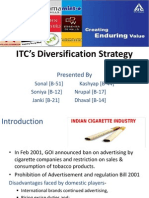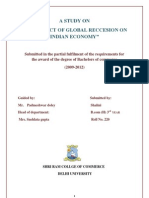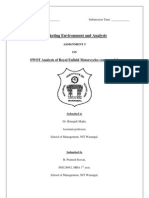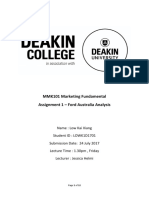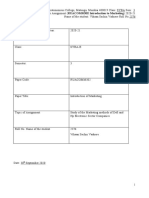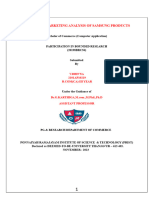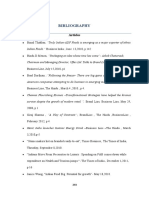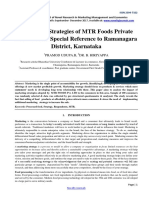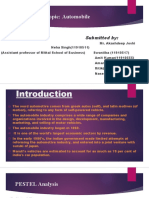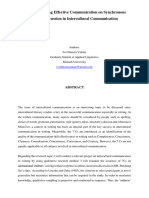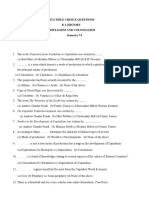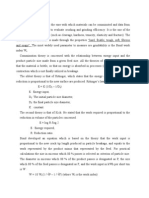PESTEL Analysis
To understand the attractiveness of the industry, we conduct the PESTEL analysis to understand the
macro-economic factors that affects it. In PESTEL, we analyse the situation Political, Economic,
Social, Technological, Environmental and Legal aspects to see how each factor affects the industry.
Political:
The Indian Government is in huge support of FDI in the electronics hardware manufacturing
industry which is why they have allowed a 100% FDI under the automatic route.
The Draft National Policy has a target to produce 1 billion handsets by 2025.
National Policy on Electronics aims to achieve an investment of 100 billion USD by end of
2020.
Policies like Digital India and Make in India along with the Customs Duty Relaxation on
metals, wires, cables and electronic parts furthers makes it more attractive.
Economic:
Increase in the disposable incomes and easy access to credit has led to a huge increase in
the demand of the consumer durables in India.
The per capita income is increasing due to growing working population and rise in the
income levels which leads to an increase in sales and hence the companies can invest more
in the research and development.
Social:
65% of the Indian population is under the age of 35 years. The younger generation is tech
savvy which would lead to a huge demand of the electronic goods in the coming years.
The electrification of the rural areas along with the ease of accessibility via e-commerce and
online sales has aided the demand of the electronic goods.
Electronic goods are now considered as a status symbols along with the products like
jewellery and automobiles.
Technology:
Technological advancements have played a pivotal role in the rise of the consumer durables
market in India.
� Constant innovations in terms of high battery power, fast processing speeds and storage
capacity have made the devices multi-purpose which has further increased the demand.
Technology has led to a reduction in cost of the electronic devices via process innovations
which has made them affordable for everyone.
Technology has also made the accessibility of goods easier with the help of e-commerce.
Environment:
Increase in the use of the consumer durables have led to an increase in e-waste. This has led
to an increase in the pressure on the manufactures from the environmental bodies and the
NGOs to recycle the e-waste.
Most of the electronic devices directly or indirectly consume electricity and hence put a
pressure on the sources of energy. Hence, the companies also have to face regulations in
terms of the amount of electricity consumed by the products it manufactures.
Legal:
Many electronic devices have access to the user data and hence the manufacturers come
under the data protection laws.
Manufacturers are also subject to the consumer protection laws and environment
protection laws. If the sales happen over the internet, the laws regarding the e-commerce
also come into play.
Recommendations for the next few years
We would use the ABC test to suggest recommendations to Xiaomi so that we can study the
recommendations from the company as well as the industry’s perspective.
Focus on Offline Channels: Currently most of the retail sales that Xiaomi does is in the smartphone
segment. It should expand it’s smartphone strategy to other products while increasing the
smartphone outreach.
Attractiveness: The online channel in India contributes to 35% of the market while the offline market
contributes to the rest 65%.
Better-off Test: The offline retail structure followed by Xiaomi is as follows:
Xiaomi Retail are the exclusive Xiaomi stores while Xiaomi General Trade consists of MI Preferred
Partners and Large Format Retail stores like Reliance, Croma and Vijay Sales. Xiaomi believes in the
Pareto rule that 80% of the sales come from top 20% dealers and hence, it has limited Width of
�Distribution(WOD). With this strategy, Xiaomi has been able to reach 22% market share in the offline
smartphone retail market. Below is the comparison of Xiaomi with it’s primary competitor in the
smartphone market
* This data was provided by Xiaomi for a case study competition in October 2019
Xiaomi has been able to achieve a 22% market share with just presence in 6000 outlets which shows
it’s popularity. Hence, it should leverage the popularity to boost the sales of it’s other products. It
should also open more Xiaomi Retail outlets so as to get better profit margins.
Cost of Entry: The present scenario of the exclusive Xiaomi Retail is as follows:
Xiaomi can open more retail outlets with the annual operating cost as mentioned in the table above.
If it opens more exclusive retail outlets, it also has to face a cost to convince the General Trade
outlets by providing them higher margins as Xiaomi Retail would be a direct competitor to them.
�Launching New Category in Indian Market
Attractiveness: Xiaomi has a lot of credibility in the Indian market. For e.g. India is the first country
where it launched MI beard trimmer at Rs. 1199 and it became a best-seller within a day on
Amazon.in. Hence, the Indian market is a very attractive for Xiaomi to launch innovative products.
Xiaomi is already doing well in India in the following categories:
Better-off Test: Xiaomi is known for it’s low cost, high quality products. It started it’s smartphone
business in India in 2014 and has become the market leader by Q1 2019. Xiaomi has a world class
research and development team that focuses on innovation coupled with cost leadership.
Cost of Entry: Indian market is a highly dynamic market and hence, launching a new product always
has some risk associated with it. Also, there are some established brands in India that people prefer
while buying high priced products due to the magnitude of investment. Hence, if Xiaomi is entering
in such a segment with it’s focus on cost leadership, the project might not reap the benefits in
comparison to the heavy investment made.






